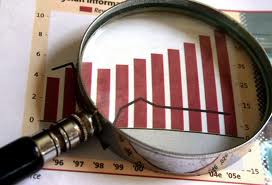Archive for the ‘Top Line Growth’ Category
It’s a tough time to be a CEO
2009 is a tough year, especially for CEOs.
CEOs have a strong desire to do what it takes to deliver shareholder value, but that’s coupled with a deep concern that tough decisions may dismantle the company in the process.
Here is the state-of-affairs:
Sales are down and money is tight. There is severe pressure to cut costs including those that are linked to sales – marketing budgets, sales budgets, travel – and things that directly impact customers – technical service, product manuals, translations, and warranty.
Pricing pressure is staggering. Customers are exerting their buying power – since so few are buying they want to name their price (and can). Suppliers, especially the big ones, are using their muscle to raise prices.
Capacity utilization is ultra-low, so the bounce-back of new equipment sales is a long way off.
Everyone wants to expand into new markets to increase sales, but this is a particularly daunting task with competitors hunkering down to retain market share, cuts in sales and marketing budgets, and hobbled product development engines.
There is a desire to improve factory efficiency to cut costs (rather than to increase throughput like in 2008), but no one wants to spend money to make money – payback must be measured in milliseconds.
So what’s a CEO to do? Read the rest of this entry »
Engineering your way out of the recession
 Like you, I have been thinking a lot about the recession. We all want to know how to move ourselves to the other side, where things are somewhat normal (the old normal, not the new one). Like usual, my mind immediately goes to products. To me, having the right products is vital to pulling ourselves out of this thing. There is nothing novel in this thinking; I think we all agree that products are important. But, there are two follow-on questions that are important. First, what makes products “right” to move you quickly to the other side? Second, do you have the capability to engineer the “right” products?
Like you, I have been thinking a lot about the recession. We all want to know how to move ourselves to the other side, where things are somewhat normal (the old normal, not the new one). Like usual, my mind immediately goes to products. To me, having the right products is vital to pulling ourselves out of this thing. There is nothing novel in this thinking; I think we all agree that products are important. But, there are two follow-on questions that are important. First, what makes products “right” to move you quickly to the other side? Second, do you have the capability to engineer the “right” products?
The first question – what makes products “right” for these times? Capacity is important to understanding what makes products right. Capacity utilization is at record lows with most industries suffering from a significant capacity glut. With decreased sales and idle machines, customers are no longer interested in products that improve productivity of their existing product lines because they can simply run their idle machines more. And, they are not interested in buying more capacity (your products) at a reduced price. They will simply run their idle machines more. You can’t offer an improvement of your same old product that enables customers to make their same old products a bit faster and you can’t offer them your same old products at a lower price. However, you can sell them products that enable them to capture business they currently do not have. For example, enable them to manufacture products that their idle machines CANNOT make at all. To do that means your new products must do something radically different than before; they must have radically improved functionality or radically new features. This is what makes products right for these times.
On to the second question – do you have the capability to engineer the right products? Read the rest of this entry »
Out of the recession — top line or bottom line approach?
 I have been watching the news and listening to the pundits, and, apparently, we are steaming out of the great recession and the manufacturing flywheel is nearing full speed.
I have been watching the news and listening to the pundits, and, apparently, we are steaming out of the great recession and the manufacturing flywheel is nearing full speed.
As we all know, that’s a bunch of crap. Many manufactures are still in survival mode where cost cutting has crossed into the ridiculous; where the best talent has been cut; and where the product development flywheel is motionless. We are far from coming out of this thing, and the bad stuff we had to do to survive will take time to undo.
However, some companies are considering options to accelerate themselves out of the soup. They are asking the big question – what is the fastest way out?
To me, the fastest way out is all about three things: product, product, product — do you have the right products coming to market? Or, if not, how can you get your product development flywheel moving so the right products hit the market as quickly as possible? But, what are the attributes of the “right product”?
I think there are two components of the right product: the top line component and the bottom line component. The top line component (which drives top line growth) is all about function and features. More function equals increased sales through market share and price. The bottom line component (bottom line growth) is all about cost. Pretty basic. But, if your resources are limited (like most of us) and can improve only one, which should you improve?
Bottom line cost reduction is not glamorous, but the balance sheet improvment is surprisingly good. Let me give an example. Product A is an existing product that sells for $1000 and it costs you $800 to produce, providing $200 profit per unit. You spend your product development resources on a bottom line effort and reduce product cost by 20%. Still selling for $1000 but with a cost of $640 (0.8 * $800), profit dollars increase by 80% ($360 vs. $200). Not bad especially since sales have not increased.
Top line growth has a strong emotional component which energizes people, and the upside potential is huge. Here is an example using the same product as above. Product A still sells for $1000, costs you $800, and you make $200 per unit. You spend your product development resources on a top line project to add better functionality and more features. Because you don’t have time to address the bottom line component, your costs go up 10% (to $880). But, you do get the function and features you wanted, and the market can support a 10% price increase to $1100. Profit per unit is up 10% t0 $220 ($1100 – $880). Your engineering really came through and the market likes your new product and sales increase by 20%. With all that, profit dollars increase by 32% ($220*1.2 = $264 vs. $200).
Clearly the examples are contrived to illustrate a point: bottom line cost reduction is powerful and so are top line sales growth and price increase. And the best answer is not to choose between top line and bottom line components. It makes a lot of sense to do a little of both, because it’s the fastest way out of the soup.
 Mike Shipulski
Mike Shipulski